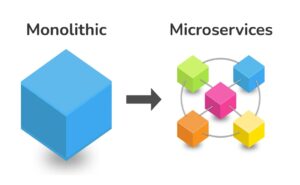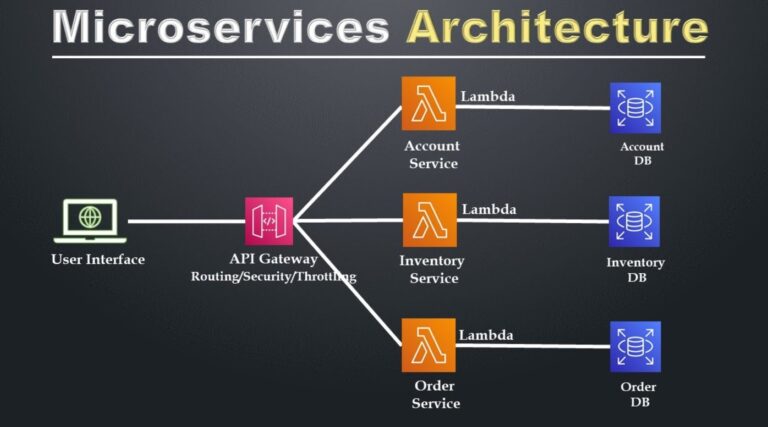Modern software systems face increasing demands for scalability, flexibility, and reliability. Developers and enterprises are constantly in search of architectural patterns that meet these requirements efficiently. One such pattern, Microservices Architecture, has emerged as a groundbreaking approach to designing and deploying robust applications. By breaking down complex systems into smaller, independently deployable services, microservices foster adaptability and innovation while addressing the limitations of monolithic systems. This article provides a comprehensive exploration of microservices, detailing their core principles, key benefits, challenges, and best practices to implement scalable solutions effectively.
What is Microservices Architecture?
At its core, Microservices Architecture is an architectural style that structures a software application as a collection of small, autonomous services modeled around specific business capabilities. Each service operates independently and communicates with other services via lightweight mechanisms, such as RESTful APIs, messaging queues, or event streams. Unlike monolithic systems, where all functionalities are tightly coupled in a single codebase, microservices adopt a decentralized approach to application design.
Key Characteristics of Microservices
The design philosophy of microservices incorporates several defining traits that make them a valuable architecture for modern applications.
- Independent Deployment
Each service within a microservices ecosystem can be deployed, updated, or scaled independently without disrupting other components of the system. This provides enhanced flexibility for iterative development and rapid deployments.
- Decentralized Data Management
Microservices Architecture often embraces decentralized data storage. Instead of a single central database shared across multiple services, each service manages its database tailored to its specific needs.
- Technology Diversity
Developers can use different programming languages, frameworks, and tools for various services within the same system, granting teams the freedom to select technologies best suited for specific requirements.
- Resilience and Fault Tolerance
Isolating functionalities into individual services ensures that failures in one service do not cascade and incapacitate the entire system. This increases overall system reliability.
- Business-Centric Design
Microservices are designed around business capabilities, aligning technical implementations directly with organizational objectives, which enhances cross-team collaboration.
How Microservices Compare to Monolithic Architecture
To appreciate the value of Microservices Architecture, it is essential to contrast it with traditional monolithic systems.
|
Aspect |
Monolithic Architecture |
Microservices Architecture |
|---|---|---|
|
Deployment |
Single, unified deployment |
Independent service deployments |
|
Scalability |
Difficult to scale parts independently |
Scales individual components easily |
|
Maintenance |
Complex and risky for large systems |
Simplified by modularity |
|
Technology Choice |
Restricted to one tech stack |
Freedom to use diverse technologies |
|
Fault Isolation |
A single failure can disrupt the system |
Failures are isolated to a service |
While monoliths may be advantageous for small, simple applications due to their straightforward structure, they struggle to meet the demands of scalability and agility required by modern businesses.

Advantages of Microservices Architecture
The adoption of a Microservices Architecture offers several long-term benefits for organizations and their software systems.
Scalability
Scalability is one of the defining advantages of microservices. Since each service can be scaled independently, businesses can efficiently address increased demand for specific features without overprovisioning resources for less-used functions.
Faster Time-to-Market
Development teams working in parallel on independent microservices can accelerate product updates, bug fixes, and feature releases. This is especially beneficial for agile methodologies or DevOps workflows.
Flexibility in Technology
Enterprises can integrate the best tools for individual services. For example, one service might utilize Python for its data analysis capabilities, while another employs Java for high-performance functionality.
Tailored Maintenance
Since microservices distribute responsibilities across smaller components, troubleshooting and maintenance are more manageable. Developers can focus only on affected services rather than navigating a tangled monolith.
Improved Team Autonomy
This architecture fosters smaller, cross-functional teams that focus solely on the development and operation of specific services. This autonomy improves productivity and collaboration across departments.
Challenges in Implementing Microservices Architecture
Although Microservices Architecture offers numerous benefits, it also comes with challenges that need careful management during implementation.
Increased Complexity
By replacing a single system with tens or even hundreds of individual services, the overall system becomes complex to design, monitor, and troubleshoot.
Network Latency and Failures
The increased reliance on inter-service communication introduces risks of latency and network failures. These must be mitigated with practices like load balancing, health checks, and retries.
Data Management
Since individual services often maintain their databases, ensuring data consistency across the ecosystem can be tricky. Employing eventual consistency models becomes necessary.
Deployment Overhead
Although independent deployments allow for flexibility, automating deployment pipelines for multiple services can require considerable effort.
Monitoring and Observability
Keeping track of the performance and status of numerous individual services demands robust monitoring tools and observability practices.
Best Practices for Successful Microservices Implementation
Ensuring the success of Microservices Architecture requires following industry-best practices and leveraging tools specifically designed for this architectural style.
Build a Strong DevOps Culture
Successful microservices deployment often depends on a DevOps approach, fostering collaboration between development and operations teams to streamline the CI/CD pipeline.
Use API Gateways
API gateways serve as a single entry point for clients to interact with various services. They also handle cross-cutting concerns such as authentication, caching, and load balancing.
Adopt Containerization and Orchestration
Platforms like Docker and Kubernetes empower teams to manage microservices efficiently. Containerization ensures environment consistency, while orchestration automates service scaling and management.
Implement Distributed Tracing
Distributed tracing tools like Jaeger or Zipkin help track service-to-service interactions, pinpointing issues in communication pathways.
Design for Failure Recovery
Services should be designed with resilience mechanisms, such as retries, timeouts, and fallback strategies. Circuit breakers also play a vital role in preventing system overloads.
Real-World Use Cases of Microservices Architecture
Organizations across industries have embraced Microservices Architecture to revolutionize their systems.
- Netflix
Netflix is a pioneer in microservices adoption. By transitioning from a monolithic system, they achieved unparalleled scalability to serve their massive global audience while rolling out features rapidly.
- Amazon
Amazon’s e-commerce platform utilizes microservices for various functions, including order processing, search, and inventory management. This architecture ensures the platform remains highly available and efficient.
- Uber
Uber leverages microservices to power its multifaceted system of ride-sharing, payment processing, and real-time tracking, ensuring minimal downtime and maximum performance.

The Future of Microservices Architecture
Emerging trends in Microservices Architecture indicate continuous evolution in how businesses structure their software systems. Serverless computing, event-driven architecture, and AI-powered automation are shaping the future of microservices. Coupled with advancements in edge computing and container orchestration, microservices are poised to remain at the forefront of scalable and efficient software design.
Advantages of Microservices Architecture
One of the primary benefits of microservices architecture is its scalability. By breaking down applications into smaller, autonomous services, teams can scale individual components based on demand rather than the entire system. This modularity also fosters developer productivity, as teams can work on specific features independently. Furthermore, fault isolation in microservices ensures that issues in one service do not compromise the entire application, leading to improved system reliability.
Challenges of Implementing Microservices
Despite its benefits, implementing microservices can present challenges. Managing the communication between multiple services often requires complex coordination, typically involving APIs or messaging queues. Increased system complexity may lead to difficulties in debugging and monitoring. Additionally, transitioning from monolithic architectures to microservices requires careful planning, as data consistency and deployment orchestration can become significant hurdles.
Best Practices for Microservices
To successfully leverage microservices architecture, adhering to best practices is key. Designing services around business capabilities ensures alignment with organizational goals. Using tools for containerization, such as Docker, and orchestration platforms like Kubernetes can optimize deployment and scaling. Implementing robust monitoring and logging solutions is also essential for maintaining performance and troubleshooting issues promptly. Prioritizing secure communication between services and managing distributed data responsibly help foster a resilient system.
Final Thoughts
Microservices Architecture offers numerous benefits, from scalability and faster time-to-market to improved team autonomy. However, successful implementation requires addressing challenges such as increased complexity and network latency. Leveraging best practices and embracing upcoming trends can help businesses maximize the potential of microservices and stay ahead in today’s rapidly evolving technology landscape. Whether you are considering adopting this architectural style or are already implementing it, continuously reviewing your approach will ensure long-term success. So continue to explore new tools, evaluate your architecture, and fine-tune your processes to reap the full potential of Microservices Architecture.


